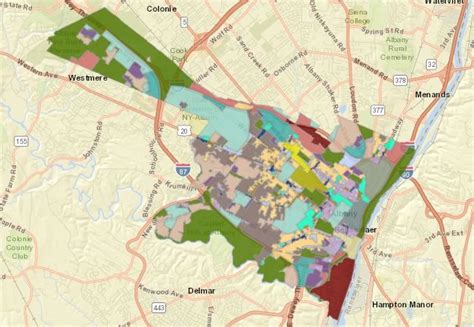Nestled in the heart of the Hudson Valley, Albany serves as the vibrant capital of New York State, while Richmond, brimming with Southern charm, is the captivating capital of Virginia. Both cities boast rich histories, cultural vitality, and ample opportunities, inviting visitors and residents alike to explore their unique allure. This comprehensive comparison delves into the distinctive characteristics of Albany and Richmond, highlighting their strengths, challenges, and overall desirability.

Cost of Living and Housing
Albany:
* Median home value: $250,000 (Zillow)
* Median rent: $1,600 (Zillow)
* Cost of living index: 98.6 (Sperling’s BestPlaces)
Richmond:
* Median home value: $365,000 (Zillow)
* Median rent: $1,900 (Zillow)
* Cost of living index: 100.4 (Sperling’s BestPlaces)
While both cities offer comparable costs of living, Richmond’s housing market tends to be slightly more expensive. Nevertheless, Albany provides more affordable options for those seeking homeownership.
Education and Healthcare
Albany:
* Home to the University at Albany, the State University of New York’s flagship research university
* Albany Medical Center, a leading academic medical center
Richmond:
* Virginia Commonwealth University (VCU), a comprehensive research university
* Virginia Commonwealth University Health System, an acclaimed healthcare provider
Both cities excel in education and healthcare, with Albany boasting a strong presence of the State University of New York system and Richmond embracing the innovative spirit of VCU. Their medical centers offer advanced healthcare services, contributing to the overall well-being of their residents.
Economy and Job Market
Albany:
* Major industries include government, healthcare, and education
* Unemployment rate: 4.2% (U.S. Bureau of Labor Statistics)
Richmond:
* Growing industries include finance, technology, and healthcare
* Unemployment rate: 4.1% (U.S. Bureau of Labor Statistics)
Albany’s economy relies heavily on the government sector, while Richmond has a more diversified economy with a burgeoning tech industry. Both cities boast robust job markets, offering ample employment opportunities in various fields.
Culture and Recreation
Albany:
* State Museum of New York, showcasing New York’s natural and cultural history
* EMPAC (Experimental Media and Performing Arts Center), a renowned arts and technology venue
Richmond:
* Virginia Museum of Fine Arts, housing an extensive collection of art from around the world
* Virginia Symphony Orchestra, providing a wide range of musical performances
Albany and Richmond are cultural hubs with vibrant arts scenes. Albany excels in experimental art and technology, while Richmond embraces both traditional and contemporary expressions. Both cities offer a diverse array of recreational activities, from historical sites to scenic parks.
Transportation and Connectivity
Albany:
* Albany International Airport (ALB), a major regional airport
* Amtrak station, providing rail service to major cities in the Northeast
Richmond:
* Richmond International Airport (RIC), a hub for international travel
* Amtrak station, offering connections to the East Coast and Midwest
Albany offers convenient air and rail connections to the Northeast, while Richmond’s international airport provides a gateway to global destinations. Both cities have well-developed public transportation systems, making it easy to navigate within their respective metropolitan areas.
Parks and Green Spaces
Albany:
* Washington Park, a sprawling urban park with a lake, gardens, and performance venues
* Albany Pine Bush, a unique inland pine barrens with hiking trails and wildlife
Richmond:
* Maymont, a historic estate featuring gardens, a petting zoo, and a Japanese garden
* James River Park, a scenic riverside park system with trails, boat launches, and picnic areas
Albany and Richmond boast expansive parks and green spaces, offering residents and visitors a chance to connect with nature. Albany’s Pine Bush is a natural treasure, while Richmond’s James River Park provides unparalleled recreational opportunities along the James River.
Safety and Crime
Albany:
* Violent crime rate: 985 per 100,000 (NeighborhoodScout)
* Property crime rate: 4,394 per 100,000 (NeighborhoodScout)
Richmond:
* Violent crime rate: 947 per 100,000 (NeighborhoodScout)
* Property crime rate: 5,885 per 100,000 (NeighborhoodScout)
Both cities have comparable levels of violent crime, but Richmond experiences a higher property crime rate. It’s important to note that crime rates can vary significantly within different neighborhoods of both cities.
Pros and Cons
Albany:
Pros:
* Affordable housing and cost of living
* Strong education and healthcare infrastructure
* Vibrant arts scene with EMPAC
Cons:
* Dependence on government sector for employment
* Higher property crime rate
Richmond:
Pros:
* Diversified economy with growing industries
* Excellent cultural institutions, including VMFA and VCU Arts
* Extensive green spaces and parks
Cons:
* More expensive housing market
* Higher property crime rate
Conclusion
Albany and Richmond, two vibrant cities with distinct identities, offer a unique blend of rich history, cultural vitality, and economic opportunities. Albany’s affordability, thriving university, and cutting-edge arts scene make it an attractive option for those seeking a balanced lifestyle. Richmond, with its diverse economy, acclaimed healthcare system, and abundant cultural offerings, appeals to those seeking a dynamic and progressive city.
Ultimately, the choice between Albany and Richmond depends on an individual’s priorities and preferences. Whether one prefers Albany’s affordability and government presence or Richmond’s economic vitality and cultural richness, both cities provide a compelling proposition for those seeking a fulfilling life in the heart of their respective states.
